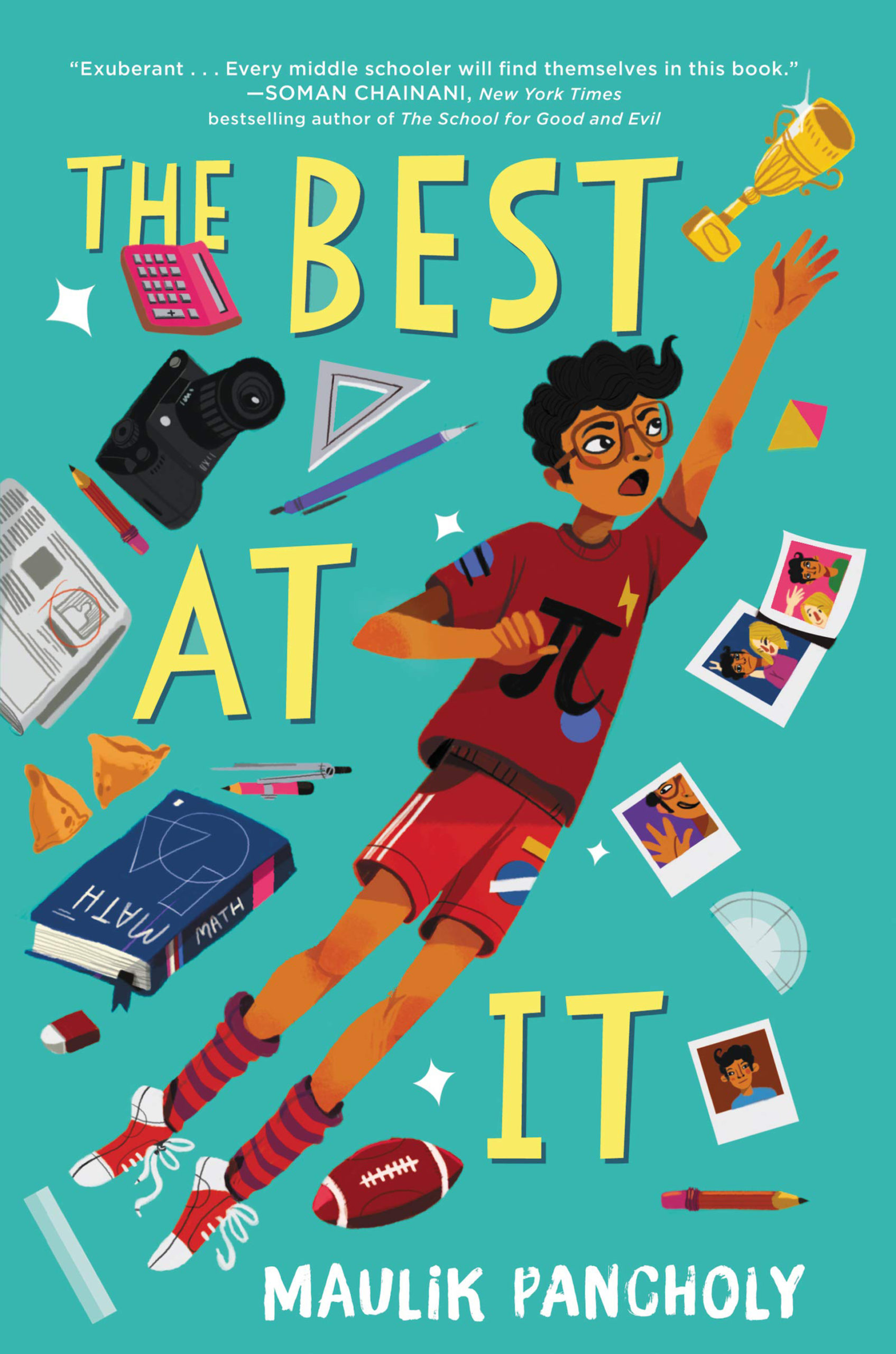Indian Protagonist Center Of Young Adult Novel Debut


Choose one: Maulik Pancholy’s Young Adult novel “The Best At It” is: a) timely, with middle school youngsters staying home; b) politically correct in taking on pre-adolescent problems related to ethnic assimilation and sexual identity); c) written in a lively style that succeeds in conveying authenticity while avoiding expletives; d) inspirational without being maudlin or predictable; or e) all of the above. Choose e).
The author (Yale School of Drama, Northwestern University) is new to me though his bio boasts award-winning roles on TV (including “30 Rock”), Broadway, in films, and serving on President Obama’s Advisory Commission on Asian Americans and Pacific Islanders, with a particular interest in addressing bullying.
Pancholy knows how to create scenes and believable dialogue, some of the exchanges right-on funny. It’s unfortunate, though, that the colorful book jacket bears a sticker from the American Library Association announcing that “The Best At It” is a Stonewall Honor Book. It would be better were young readers (ages eight through 12, third through eighth grades) — and their parents — to discover this for themselves.
Being gay is not 12-year-old Rahul’s only anxiety. He wants to be “cool” like blond, athletic Justin, who hangs out with the jocks, including the school bully. Rahul watches them in “the cool-kids area,” which he recognizes is a “nightmare” of guys who spend their time wrestling with each other or throwing cheese puffs, but still he sees them as the in-people, and himself as out.
Rahul suffers from obsessive compulsive disorder, getting up in the middle of the night to see if doors are locked and appliances off. He’s also driven by feeling he must be the best at what he does, though he doesn’t at first acknowledge what his teachers and family recognize, that his number-one talent is mathematics.
Skinny, reliant on glasses, he sees himself as nerdy, uncool. He wants to be like the so-called regular guys — muscled, tan (not brown), good at football, even though he doesn’t even know how to hold one when he auditions for the school team.
He’s sometimes embarrassed at his parents’ friends, a mass of “Aunties” (“In Indian culture you basically call anyone your parents hang out with your auntie or your uncle”), who come to his school wearing saris. They make him feel “different,” even more than he already feels. Chelsea, his best friend, is a girl, but not his girlfriend. His worst enemy is the school bully, Brent, whose racist and homophobic taunts increasingly veer toward public humiliation and physical assault.
Though Rahul’s beloved and loving wheelchair-bound grandfather Bhai is said to have “a Mr. Rogers-worthy supply of cardigans,” the Bollywood culture referenced in the book happily informs Rahul’s life, particularly as his father, an ER doctor, plays in a Bollywood music group. His mom, a business executive, also moves in the wider world with ease but is not surprised when Rahul, trying out for a TV ad placed by their local bank, finds out that only whites need apply.
Much about the book is autobiographical. Like Rahul, now 46-year-old Pancholy grew up in a small town in Indiana, though his family moved to Tampa. He set his story in small-town white Indiana, he’s said in interviews, because being gay was not talked about then. Also, like Rahul, the author was a competing mathlete. He loved to read when he was Rahul’s age, but missed seeing characters who looked like him. “It’s exciting to be entering this literary world now because there is a lot of support for diverse storytelling. I think young people are actually hungry for it, too. We don’t live in a homogenous world. Kids want to see truth in the stories that they read.”
True enough, but unlike Rahul, so many confused or troubled youngsters today, regardless of ethnic or gender identity concerns, do not have, as Rahul does, a loving support group in the form of family, extended family, and economic stability. Class, some say, counts as much as race, in academic achievement and economic equality. There’s also Rahul’s cultural advantage: As Bhai jokes with his grandson, playing on the name of the self-taught mathematical genius Srinivasa Ramanujan, FRS, India has a strong intellectual tradition.
“The Best At It” is a well-written, heartwarming narrative that takes on contemporary issues, with an overarching theme about competing, winning, losing, and owning up to who and what you are. In an age when science fiction and exotic fantasy dominate the YA market, especially for boys (with an increasing amount of violence), Pancholy’s engaging debut novel is most welcome.



